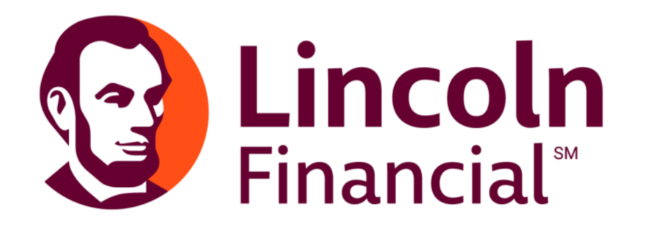What is term life insurance?
Term life insurance provides financial protection for your family over a fixed period of time, typically lasting 10 to 30 years. If you die during that period, your beneficiary will receive the death benefit — typically a lump sum of money — tax-free. Term life insurance is one of the most popular types of life insurance policies.
What does term life insurance cover?
Term life insurance pays out a death benefit if you die when your policy is active. It covers almost any type of death, including:
Illness: Term life insurance will remain active even if you develop a severe or chronic illness, or if you were to pass away from that illness.
Accident: Term life covers death by accident, too (for example, a car accident).
Pros
Term life insurance coverage is a good fit for many people seeking life insurance. Some features that make a term policy beneficial are:
Affordable: Term life is cheaper than other kinds of life insurance, so you can get the coverage you need at a manageable price. For instance, a 35-year-old female non-smoker who pays around $15 a month for a term life policy would have to pay more than $100 a month for the same amount of whole life coverage.
Straightforward: No complex tax implications or restrictions.
Coverage when you need it: Term life insurance provides financial protection during the period of your life when you have major financial obligations to meet.
Cons
Everyone’s needs are different, so while term life insurance makes sense for many people, it can have limitations. Some of the features that make term policies less attractive include:
Expiration date at the end of the term (usually between 5 and 40 years), at which point you'll need to buy a new policy if you still want insurance.
Lack of cash value savings component. Term policies only offer a guaranteed lump-sum "death benefit." By contrast, whole life insurance has a cash value that earns interest over time and is separate from the death benefit, which is attractive if you have a higher net worth and are seeking alternative investment strategies.
Who should consider term life insurance?
Anyone who has financial obligations or dependents whose livelihoods depend on their income should consider buying life insurance. People commonly buy life insurance for the following scenarios:
Newlyweds, married couples, and people who share expenses with a partner. In this case, someone else is dependent on their income.
Parents, guardians, and people planning on having children. Life insurance provides a financial safety net when raising children.
Homeowners with a mortgage, or people with other significant debt. It’s important to think through any expenses your loved ones might be responsible for in your absence.
Is term life insurance worth it?
Term life insurance is worth it if you have — or are planning to have — financial responsibilities and people who are dependent on your income for their livelihood. It provides financial protection during your most critical income-earning years.
How does term life insurance work?
Term life insurance is active for a set number of years — also known as the term. During the term, you pay a monthly or annual premium to the insurance company, and in exchange the company pays a tax-free lump sum of money to your beneficiary if you die while the policy is active.
What happens when the term ends?
When the term ends, you have a few different options.
Let the policy expire. Many people choose coverage that will last until retirement, at which point they might not need life insurance at all.
Convert to a permanent policy. Many insurance companies allow you to convert your term policy to a permanent life insurance policy as you’re approaching the end of your term, if you still need a small amount of coverage.
Renew your policy at a higher premium. Many term policies renew at a higher price every year, so you can keep the same coverage if you’d like, and just pay more.
Apply for a new policy. If your term ends, you can always apply for another term policy if you need coverage for a few more years.
Do you get your money back at the end of a term policy?
No. Much like with other types of insurance, you pay your premium in exchange for coverage. For instance, an insurance company will not refund your car insurance premiums if you don’t get into an accident.
There are some exceptions with return-of-premium products, but due to their high cost, it’s typically not the most effective use of your money, since you can usually get higher returns elsewhere.
How to convert from term to permanent life insurance
If you’ll still have financial obligations when your term insurance expires, you can convert the policy to a permanent coverage option with a term conversion rider — life insurance riders are add-ons that supplement your policy's coverage. If you do so, you’ll need to activate the rider before your policy expires in order to avoid any coverage gaps.
Can you get term life insurance without a medical exam?
Yes, it’s possible to apply and get approved for a term policy without having to take the medical exam that’s a standard part of the application process.
Many insurance companies, including a few Policygenius partners, offer no-medical-exam life insurance options. In that case, your eligibility during the underwriting process will usually be determined by health records and a health questionnaire instead.
What term life insurance policies can you buy through Policygenius?
Policygenius sells term life insurance policies from some of the top insurers in the country, including Banner Life, Protective, AIG, Prudential, Brighthouse Financial, Transamerica, Mutual of Omaha, Pacific Life, and Symetra.
Best term life insurance companies of February 2023
Insurance Company | Term life policy name | Issue ages | Term lengths | Coverage minimum | Coverage maximum (AU option) | Accelerated underwriting option | |
|---|---|---|---|---|---|---|---|
SimplySelect | 25-50 years old | 10, 20, 30 years | $100,000 | $3 million | Yes | ||
OpTerm | 20-75 years old | 10, 15, 20, 25, 30, 35, 40 years | $100,000 | Based on financial underwriting ($2 million) | Yes | ||
Classic Choice Term | 18-80 years old | 10, 15, 20, 25, 30, 35, 40 years | $100,000 | Based on financial underwriting | No | ||
Select-a-Term | 20-80 years old | 10, 15, 20, 25, 30, 35 years | $100,000 | Based on financial underwriting | No | ||
Term Essential | 18-70 years old | 10, 15, 20, 30 years | $100,000 | Based on financial underwriting ($3 million) | Yes | ||
TrendSetter Super | 18-80 years old | 10, 15, 20, 25, 30 years | $25,000 | Based on financial underwriting ($2 million) | Yes | ||
Term Life Express | 18-70 years old | 10, 15, 20, 30 years | $25,000 | $300,000 | Yes | ||
Promise Term | 18-80 years old | 10, 15, 20, 25, 30 years | $50,000 | $3 million | Yes | ||
Term Accel | 18-60 years old | 10, 15, 20, 30 years | $100,000 | $2.5 million | Yes | ||
Symetra Term | 20-80 years old | 10, 15, 20, 30 years | $250,000 | Based on financial underwriting | No |
Brighthouse Financial’s SimplySelect
For individuals with no or very few minor health issues, Brighthouse Financial is best for immediate underwriting. The company’s application process is short and can be completed with a licensed agent in just a few minutes. Most eligible individuals actually get an offer for coverage instantly on the same phone call with the agent they apply with.
Age eligibility: 25-50 years old
Term lengths: 10, 20, and 30 years
Coverage minimum: $100,000
Coverage maximum (accelerated underwriting): $3 million
Accelerated underwriting: Yes
Good for: Instant approvals
Banner Life’s OpTerm
Banner Life is one of the best insurance companies for people who need coverage for an extended period of time. It offers a 40-year term, which is longer than what most other insurers provide. It also has one of the fastest underwriting processes available. In fact, if eligible, many people who apply for Banner’s OpTerm can get coverage the same day.
Age eligibility: 20-75 years old
Term lengths: 10, 15, 20, 25, 30, 35, and 40 years
Coverage minimum: $100,000
Coverage maximum (accelerated underwriting): $2 million
Accelerated underwriting: Yes
Good for: Long-term coverage
Protective’s Classic Choice Term
Protective Life consistently offers some of the most competitive rates for life insurance coverage, regardless of age. On the other hand, it usually requires a medical exam as part of its application process. If you’re young and healthy, Protective’s Classic Choice may be one of the cheapest fully underwritten term life insurance options on the market.
Age eligibility: 18-80 years old
Term lengths: 10, 15, 20, 25, 30, 35, and 40 years
Coverage minimum: $100,000
Coverage maximum (accelerated underwriting): N/A
Accelerated underwriting: No
Good for: Best rates
AIG’s Select-a-Term
AIG is a reliable insurance company known for having a high level of financial confidence. AIG typically can offer best rates to individuals with mild but chronic health conditions like ADD or asthma. AIG also offers competitive rates and an array of options for term lengths, making it a great choice for people with families.
Age eligibility: 20-80 years old
Term lengths: 10, 15, 20, 25, 30, and 35 years
Coverage minimum: $100,000
Coverage maximum (accelerated underwriting): N/A
Accelerated underwriting: No
Good for: Families
Prudential’s Term Essential
Prudential is one of the best-known names in the insurance industry. The insurer also offers coverage to a wider array of individuals compared to other insurance companies, including people ages 60 and above, and people with some pre-existing conditions, like Osteoporosis or Deep Vein Thrombosis (DVT).
Age eligibility: 18-70 years old
Term lengths: 10, 15, 20, and 30 years
Coverage minimum: $100,000
Coverage maximum (accelerated underwriting): $3 million
Accelerated underwriting: Yes
Good for: Seniors
Transamerica’s TrendSetter Super
Transamerica offers a simple application that, in most cases, doesn’t require a medical exam or an order for medical records. Transamerica also offers the most options to U.S. residents holding green cards or visas, and is often able to accommodate more people based on country of origin and length of U.S. residency than its competitors.
Age eligibility: 18-80 years old
Term lengths: 10, 15, 20, 25, and 30 years
Coverage minimum: $25,000
Coverage maximum (accelerated underwriting): $2 million
Accelerated underwriting: Yes
Good for: Visa and green card holders
Pacific Life’s Promise Term
Pacific Life is an excellent option for people with mild health issues, like a high BMI (Body Mass Index), sleep apnea, or mental conditions like anxiety and depression. Pacific Life also maintains some of the highest ratings for customer satisfaction and financial confidence in the industry.
Age eligibility: 18-80 years old
Term lengths: 10, 15, 20, 25, and 30 years
Coverage minimum: $100,000
Coverage maximum (accelerated underwriting): $2.5 million
Accelerated underwriting: Yes
Good for: People with pre-existing conditions
Lincoln Financial's Term Accel
Lincoln Financial is a competitive term life choice for people in their 40s and 50s, regardless of health history. If you fall in this age bracket and within the company’s definition of healthy, it will offer you its best rates. If you have a pre-existing condition such as arthritis, diabetes, or mental health issues, it offers better rates than its competitors.
Age eligibility: 18-60 years old
Term lengths: 10, 15, 20, and 30 years
Coverage minimum: $100,000
Coverage maximum (accelerated underwriting): $2.5 million
Accelerated underwriting: Yes
Good for: People in their 40s and 50s
Foresters Financial's Your Term
Foresters Financial offers a straightforward application process with no medical exam, and its term life product is a desirable option for people 55 and under. With a simple application process, many eligible applicants are able to get a coverage offer from Foresters on the initial application call.
Age eligibility: 18-55 years old
Term lengths: 10,15, 20, 25, and 30 years
Coverage minimum: $100,000
Coverage maximum (accelerated underwriting): $1 million
Accelerated underwriting: Yes
Good for: People under 55
Symetra’s Symetra Term
Symetra’s minimum coverage option is higher than what other carriers usually offer. The company is a solid choice for people with histories of cancer, often extending coverage to individuals other insurers would usually decline. It’s also best for people with more recent health issues, as it offers the option to reconsider rates after one year of coverage.
Age eligibility: 20-80 years old
Term lengths: 10, 15, 20, and 30 years
Coverage minimum: $250,000
Coverage maximum (accelerated underwriting): N/A
Accelerated underwriting: No
Good for: People with histories of cancer
How much does term life insurance cost?
Term life insurance is one of the most affordable coverage options available on the market. How much you'll pay will depend on multiple factors, including your age, gender, health, and lifestyle. The sample rates below will give you an estimate of term life costs for your particular situation — or you can use our life insurance rates calculator.
Average monthly term life insurance rates by age and gender
Age | Sex | Non-smoker | Smoker |
25 | Female | $20.89 | $57.76 |
Male | $26.69 | $73.08 | |
35 | Female | $25.43 | $77.89 |
Male | $30.15 | $93.15 | |
45 | Female | $47.62 | $163.94 |
Male | $60.54 | $223.19 | |
55 | Female | $108.31 | $363.81 |
Male | $150.12 | $523.94 |
Methodology: Average sample monthly estimated rates are for male and female smokers and non-smokers with a Preferred health rating buying a 20-year, $500,000 term life insurance policy. Life insurance averages are based on a composite of policies offered by Policygenius from AIG, Banner Life, Brighthouse Financial, Foresters Financial, Lincoln Financial, Mutual of Omaha, Pacific Life, Protective, Prudential, Symetra, and Transamerica, and may vary by insurer, term, coverage amount, health class, and state. Not all policies are available in all states. Rate illustration valid as of 02/01/2023.
Average monthly term life insurance rates by term length
Age | Sex | 10-year term | 15-year term | 20-year term | 30-year term |
25 | Female | $15.68 | $18.54 | $20.89 | $30.80 |
Male | $19.52 | $22.09 | $26.69 | $39.48 | |
35 | Female | $17.25 | $20.88 | $25.43 | $38.96 |
Male | $20.33 | $24.38 | $30.15 | $46.42 | |
45 | Female | $32.84 | $38.46 | $47.62 | $79.87 |
Male | $37.88 | $45.83 | $60.54 | $105.07 | |
55 | Female | $67.12 | $83.51 | $108.31 | $211.44 |
Male | $86.71 | $116.49 | $150.12 | $307.26 |
Methodology: Average sample monthly estimated rates are for male and female non-smokers with a Preferred health rating buying a 10-year,15-year, 20-year, or 30-year $500,000 term life insurance policy. Life insurance averages are based on a composite of policies offered by Policygenius from AIG, Banner Life, Brighthouse Financial, Foresters Financial, Lincoln Financial, Mutual of Omaha, Pacific Life, Protective, Prudential, Symetra and Transamerica, and may vary by insurer, term, coverage amount, health class, and state. Not all policies are available in all states. Rate illustration valid as of 02/01/2023.
Average monthly term life insurance rates by death benefit payout
Age | Sex | $250,000 coverage amount | $500,000 coverage amount | $1,000,000 coverage amount |
25 | Female | $14.10 | $20.89 | $33.27 |
Male | $17.03 | $26.69 | $44.40 | |
35 | Female | $16.32 | $25.43 | $42.60 |
Male | $18.48 | $30.15 | $51.70 | |
45 | Female | $28.19 | $47.62 | $86.69 |
Male | $34.95 | $60.54 | $112.95 | |
55 | Female | $59.69 | $108.31 | $207.24 |
Male | $82.46 | $150.12 | $283.12 |
Methodology: Average sample monthly estimated rates are for male and female non-smokers with a Preferred health rating buying a 20-year $250,000, $500,000, or $1 million term life insurance policy. Life insurance averages are based on a composite of policies offered by Policygenius from AIG, Banner Life, Brighthouse Financial, Foresters Financial, Lincoln Financial, Mutual of Omaha, Pacific Life, Protective, Prudential, Symetra and Transamerica, and may vary by insurer, term, coverage amount, health class, and state. Not all policies are available in all states. Rate illustration valid as of 02/01/2023.
How are term life insurance rates set?
Several factors determine the cost of term life insurance products, including your age, gender, and health. The younger and healthier you are, in general, the lower your rates will be, since you’re less likely to die while the policy is active. Each insurance company assesses the risk of each individual person who applies, and each company has different guidelines regarding how they view risk, so your rates may be different with one insurer than another.
How to buy term life insurance with Policygenius
Policygenius compares options for term life insurance coverage from top-ranked insurance companies. Based on your individual profile — things like your age, health status, and financial needs — one company will prove to be the best option for you. Policygenius utilizes independent and unbiased insurance agents who can help determine which coverage option is best suited to meet your needs.
We can make recommendations as to which term life option will be best for you based on things like price, ease of application, and overall company rating. From there, our team of experts will help you apply for life insurance, guide you through the underwriting process, and stick with you until your policy is active.
Speaking with a licensed agent at Policygenius is the first step toward getting the coverage you need.
Compare quotes from multiple insurance companies
The best life insurance company for you will depend on your specific profile and unique needs. An independent broker like Policygenius can help you easily compare quotes from multiple insurance companies to find the best rate for you.
Determine how much life insurance you need
Your life insurance coverage should be customized to your family’s financial needs. A common rule of thumb is to apply for 10 to 15 times your annual income, but it’s important to take into account your assets, liabilities, and any dependents as well. For a more precise estimate, see our life insurance calculator.
Determine the term length you need
Ideally, your term length should cover you until retirement or until your major financial responsibilities are taken care of, like paying off a mortgage or raising children until they’re financially independent.
Consider additional term life insurance riders
Riders are add-ons you can use to customize your policy. Not all riders are cost-efficient, but some can provide more comprehensive coverage for a specific need, like child riders, accidental death benefit, or living benefits.
Ask about term conversion options
Many policies come with the option to convert to a permanent life insurance policy later on, in the event your needs change. You can ask your agent about this when you apply to make sure this is an option if you expect you may need permanent coverage in the future.
Types of term life insurance
Level term life insurance
Level term is the most common and popular kind of term life insurance. In many cases, when people say “term life insurance,” they’re referring to level term policies. The death benefit and premiums are set when the policy is purchased, and remain the same over the life of the policy.
Increasing term life insurance
An increasing term policy has a death benefit that increases in value at set intervals over the course of your coverage. For example, your benefit might increase by 5% every year. Rates are higher for this type of policy, and your premiums might fluctuate as opposed to level term, where they’re guaranteed to stay the same.
Decreasing term life insurance
Decreasing term life insurance is a policy with a set premium and a death benefit that gets smaller over the coverage period. Decreasing term life insurance is often used to protect a specific debt, like a mortgage; coverage lasts as long as the loan, and the benefit decreases as you pay it off.
Return-of-premium term life insurance
Return-of-premium life insurance (ROP) — sometimes called return-of-premium term life insurance — is a type of term life insurance that refunds your payments if you outlive your coverage. Though the refunded premiums sound appealing, ROP policies are a lot more expensive than standard term life insurance.
Annual renewable term life insurance
Annual renewable life insurance is a type of term life that lasts for one year. You can renew it each year, but you’ll pay more as you age.












